Comentarios / Preguntas (97)
Sue escribió:
Starting with 18 sleeve stitches. Marker, knit1, YO (raglan inc). Knit 2 tog, Yarn over (8times - A2). Then you need to do a YO, knit 1 for last raglan inc to make 20 stitches. That makes 2 YO's next to each other. If you don't do 2 yo's next to each oth r you end up with 19 stitches!!!
30.10.2017 - 08:49DROPS Design respondió:
Dear Sue, the row with K2tog, YO, is not a row with increase for raglan, you should have increased on row before, then work row 2 in diagram as explained in previous answer (repeating K2 tog/YO the number of sts required as number of sts will inc). Happy knitting!
30.10.2017 - 10:37Sue escribió:
Im sorry I just don't understand how this can occur. The increase occurs on the 2nd row of the A2 pattern. The row with all knit 2 tog followed by Yarn over. If you follow the pattern as per the chart as well as with the Raglan increase instructions then it should go like this..see above
30.10.2017 - 08:38DROPS Design respondió:
Dear Sue, you inc 1 st on first row in A.2, so that you will work the 12 sts between markers for sleeve as follows: marker, K1, YO, K10, YO, K1 (= 14 sts between markers). On row 2 in A.2 work: K2 (the first K1 + YO), (K2 tog, YO) x 6, K2 (the YO + last K1). Happy knitting!
30.10.2017 - 10:34Sue escribió:
Also I note that doing 2 Yarn overs next to each other just creates one big hole instead of 2 holes next to each other which I can't imagine is ideal. I'm stumped.
30.10.2017 - 00:53DROPS Design respondió:
Hi Sue, The pattern does not have 2 yarn overs next to each other. They are either between 2 stitches, with 2 stitches either side or have 1 knitted stitch either side. I hope this helps and happy knitting!
30.10.2017 - 08:04Sue escribió:
Just to add the the last comment. I tried knitting the last 'knit 2 tog followed by Yarn over' (the 8th one - on the 2nd line A2) then just knitting the last s titch but that leaves you with an odd number of stitches, which I note is the same problem another person had. I think the difficulty with this pattern is that the increases aren't so straight forward when they fall on the patterned round for the sleeves, and the instructions don't seem to account for this.
29.10.2017 - 14:07DROPS Design respondió:
Dear Sue, you are starting sleeves with 12 sts less 2 sts for raglan line (1 st at the beg + 1 st at the end of sleeve) and you will increase 2 sts so that you should always get an even number of sts for sleeve. Happy knitting!
30.10.2017 - 09:52Sue escribió:
Hi I'm having trouble trying to figure out the increases on the sleeve pattern A2. As per raglan instructions I knit 1 Yarn over after the marker. Then knit 2 tog, Yarn over 8 times then I'm left with 1 stitch. How do I get the last Yarn over in before the last stitch.....do I do 2 Yarn overs next to each other ??
29.10.2017 - 07:34DROPS Design respondió:
Dear Sue, knit the last st in this case, ie when the number of sts do not match the diagram, finish pattern with K1 to avoid double yarn overs next to each other. Happy knitting!
30.10.2017 - 09:22Sue escribió:
Secondly with the increases for the Raglan the pattern states that the increases are to be done every 2nd row, but it doesn't indicate which row to start the raglan increases on. Is it row 5 or row 6? I am assuming the first round of increases is on row 5 then 7,9 etc as this means the increases are done on the knit rows of the sleeve pattern and are not getting mixed up in the lace patterning rows. Is this correct?
01.10.2017 - 03:37DROPS Design respondió:
Dear Sue, you will inc on round 6, ie after ridges, work 1 round in pattern as explained, then start to inc on next round. Happy knitting!
02.10.2017 - 09:50Sue escribió:
Sorry, typos on he last question. Hello, I am trying to work out this pattern before I start. The pattern states to increase 20 stitches on the last ROUND of the ridges. Does this mean it can be done on either row 3 or 4 which both make up the last round of ridges. I wound prefer to increase on the knit row which is row 3 with a kfb. Or do the increases have to be on the 4th and last row of the ridges which is a purl row.
01.10.2017 - 03:35DROPS Design respondió:
Hi Sue, The last round of the ridges is round 4, the purl round. So you increase on this 4th round. Happy knitting!
01.10.2017 - 12:25Sue escribió:
Hello, I am trying to work out this pattern before I start. The pattern states to increase 20 stitches on the last ROUND of the ridges. Does this mean it can be one I thee row 3 or 4 which both make up the last round of ridges. I wound prefer to increase on the knit row which is row 3 with a kfb. Or do the increase have to be on the 4th and last row of the ridges which is a purl row.
01.10.2017 - 03:33DROPS Design respondió:
Dear Sue, you will increase on the last round of ridges, ie on 4th round, you can increase also with kfb on last round of ridges (= P round). Happy knitting!
02.10.2017 - 09:48
![]() Yannick escribió:
Yannick escribió:
Bonjour (modèle petronella top - laine muskat) je ne comprends pas comment faire les augmentations du raglan en même temps que le motif A1 merci de m'expliquer - en effet je fais un jeté une maille endroit - une maille endroit et un jeté pour le motif A1 de la manche - comment puis-je alors faire une augmentation pour le raglan ?
24.08.2017 - 09:47DROPS Design respondió:
Bonjour Yannick, vous n'allez pas augmenter pour le devant/le dos et les manches en même temps, par ex en taille S, on augmente 12x tous les 2 tours et 7x tous les 4 tours pour le devant/le dos mais 18x tous les 2 tours et 4 x tous les 4 tours pour les manches. Ainsi, les 12 premières augmentations seront sur chaque pièce (= manches + dos/devant), mais par la suite, vous augmenterez soit uniquement sur les manches (4 augm par tour), soit partout (8 augm par tour). Comment augmenter mailles pour le reglan tandis que l’on fait le schemat A.1 sur les manches, consulter la partie apres les fournitures entitulee REGLAN. Bon tricot!
24.08.2017 - 09:58Genevieve escribió:
Hi. I've read some of the questions and answers and have figured out the pattern and increases. 😉
16.08.2017 - 04:06
Petronella Top#petronellatop |
|||||||||||||
|
|
|||||||||||||
Top de punto con raglán y patrón de calados, tejido de arriba abajo en DROPS Muskat. Tallas S - XXXL.
DROPS 175-32 |
|||||||||||||
|
PLIEGUE/PUNTO MUSGO (en redondo): 1 pliegue = 2 vueltas. 1 vuelta de derecho y 1 vuelta de revés. PATRÓN: Ver los diagramas A.1, A.2 y A.3. Los diagramas muestran todas las filas del patrón visto por el lado derecho. RAGLÁN: Aumentar cada 2ª vuelta como sigue: Aumentar como sigue antes del marcapuntos: Comenzar 1 punto antes del marcapuntos: Hacer una hebra, 1 derecho, marcapuntos. Aumentar como sigue después del marcapuntos: Marcapuntos, 1 derecho, hacer una hebra. En la siguiente vuelta trabajar las hebras de derecho para que queden agujeros. Aumentar cada 4ª vuelta como sigue: Aumentar como sigue antes del marcapuntos: VUELTA 1: Comenzar 1 punto antes del marcapuntos: Hacer una hebra, 1 derecho, marcapuntos. VUELTA 2: Las hebras se trabajan de derecho para que queden agujeros. VUELTA 3: Comenzar 3 puntos antes del marcapuntos: 2 puntos juntos de derecho, 1 hebra, 1 derecho, marcapuntos. No hay aumentos pero la fila de agujeros continúa como antes. VUELTA 4: Las hebras se trabajan de derecho para que queden agujeros. Aumentar como sigue después del marcapuntos: VUELTA 1: Marcapuntos, 1 derecho, hacer una hebra. VUELTA 2: Las hebras se trabajan de derecho para que queden agujeros. VUELTA 3: Marcapuntos, 1 derecho, 1 hebra, deslizar 1 punto como de derecho, 1 derecho, pasar el punto deslizado sobre el punto trabajado. No hay aumentos pero la fila de agujeros continúa como antes. VUELTA 4: Las hebras se trabajan de derecho para que queden agujeros. TIP PARA LAS DISMINUCIONES: Comenzar 3 puntos antes del marcapuntos: Trabajar 2 puntos juntos de derecho, 2 derechos (el marcapuntos queda entre estos 2 puntos), deslizar 1 punto como de derecho, 1 derecho, pasar el punto deslizado sobre el punto trabajado = 2 puntos disminuidos. TIP PARA LOS AUMENTOS: Trabajar hasta que quede 1 punto antes del marcapuntos. Hacer 1 hebra, 2 derechos (el marcapuntos queda entre estos 2 puntos), hacer 1 hebra. En la siguiente vuelta trabajar las hebras como derecho retorcido para que no se formen agujeros (los puntos aumentados se trabajan en punto jersey). --------------------------------------------------------- TOP: La labor se trabaja en redondo con aguja circular desde el centro de la espalda, de arriba abajo. CANESÚ: Montar 80-84-88-92-96-100 puntos con aguja circular tamaño 4 mm y Muskat. Trabajar 2 pliegues - ver explicación arriba, en la última vuelta de los pliegues aumentar 20 puntos repartidos en la vuelta = 100-104-108-112-116-120 puntos. Insertar 4 marcapuntos en la labor como sigue: el 1er marcapuntos después de 19-20-21-22-23-24 puntos (= mitad de la espalda), el 2º marcapuntos después de los siguientes 12 puntos (= manga), el 3er marcapuntos después de los siguientes 38-40-42-44-46-48 puntos (= delantero), el 4º marcapuntos después de los siguientes 12 puntos (= manga), quedan 19-20-21-22-23-24 puntos en la aguja después del 4º marcapuntos (= mitad de la espalda). Comenzar con los aumentos para el raglán como se describe arriba y trabajar en punto jersey sobre los puntos de la espalda y el delantero y A.1 sobre los puntos de la manga. LEER TODA ESTA SECCIÓN ANTES DE CONTINUAR. Los aumentos son diferentes en delantero/espalda y las mangas: DELANTERO/ESPALDA: Aumentar cada 2ª vuelta 12-15-17-25-30-35 veces, después cada 4ª vuelta 7-7-7-4-3-2 veces. MANGAS: Aumentar cada 2ª vuelta 18-23-27-29-26-25 veces, después cada 4ª vuelta 4-3-2-2-5-7 veces. Cuando se ha completado A.1 una vez en vertical, repetir A.2 en vertical. Los puntos aumentados en la manga se trabajan dentro del patrón según se avanza. Después del anteúltimo aumento de la manga (quedan 4 vueltas), continuar trabajando en punto musgo en los puntos de cada manga, los puntos de delantero/espalda en punto jersey como antes. RECUERDE MANTENER LA TENSIÓN DEL TEJIDO. Después de completar todos los aumentos del raglán hay 264-296-320-352-372-396 puntos en la aguja. En la siguiente vuelta trabajar como sigue: 38-42-45-51-56-61 puntos (= mitad de la espalda), cerrar los siguientes 56-64-70-74-74-76 puntos, trabajar los siguientes 76-84-90-102-112-122 puntos (= delantero), cerrar los siguientes 56-64-70-74-74-76 puntos, trabajar los siguientes 38-42-45-51-56-61 puntos (= mitad de la espalda). CUERPO: Continuar trabajando como sigue: trabajar la mitad de la espalda, montar 8-8-10-10-12-14 puntos nuevos, trabajar el delantero, montar 8-8-10-10-12-14 puntos nuevos, trabajar la mitad de la espalda. Ahora hay 168-184-200-224-248-272 puntos en el cuerpo. Insertar 1 marcapuntos a cada lado, en el centro de los puntos nuevos, recién montados. LA LABOR SE MIDE AHORA DESDE AQUÍ. Continuar con punto jersey, pero a lo largo de los 8-8-10-10-12-14 puntos nuevos montados a cada lado trabajar 2 pliegues, ahora trabajar en punto jersey a lo largo de todos los puntos. Cuando la labor mida 4 cm disminuir 1 punto a cada lado de los marcapuntos (= 4 puntos disminuidos), disminuir cada 3 cm un total de 4 veces – LEER TIP PARA LAS DISMINUCIONES = 152-168-184-208-232-256 puntos. Cuando la labor mida 19-19-19-18-18-19 cm aumentar 1 punto a cada lado de los marcapuntos (= 4 puntos aumentados), aumentar cada 2 cm un total de 6 veces – LEER TIP PARA LOS AUMENTOS = 176-192-208-232-256-280 puntos. Cuando la labor mida 32-32-32-33-33-32 cm trabajar A.3 a lo largo de todos los puntos. Ahora rematar de derecho, la labor mide aprox. 54-56-58-60-62-64 cm desde el hombro. |
|||||||||||||
Explicaciones del diagrama |
|||||||||||||
|
|||||||||||||
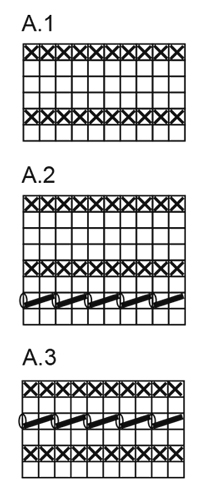 |
|||||||||||||
 |
|||||||||||||
¿Terminaste este patrón?Entonces, etiqueta tus fotos con #dropspattern #petronellatop o envíalas a la galería #dropsfan. ¿Necesitas ayuda con este patrón?Encontrarás 23 videos tutoriales, un espacio para comentarios/preguntas y más visitando la página del patrón en garnstudio.com © 1982-2025 DROPS Design A/S. Todos los derechos reservados. Este documento, incluyendo todas sus sub-secciones, está protegido por los derechos de autor (copyright). Lee más acerca de lo que puedes hacer con nuestros patrones en la parte de abajo de cada patrón de nuestro sitio. |
|||||||||||||







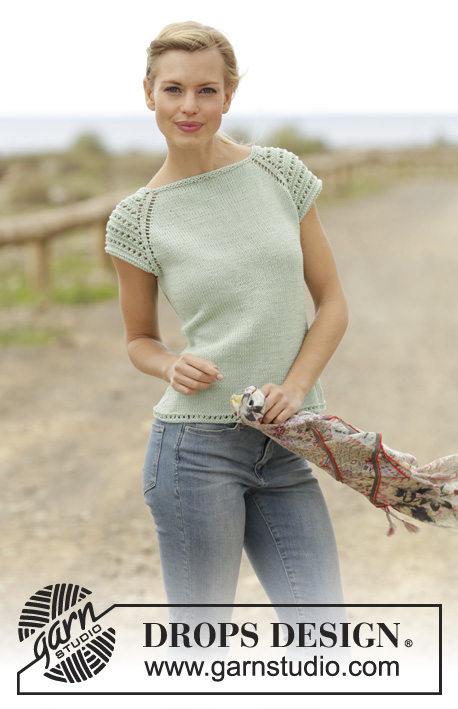
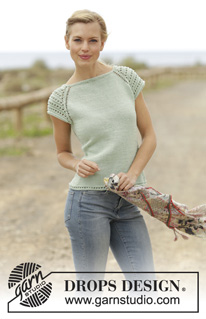



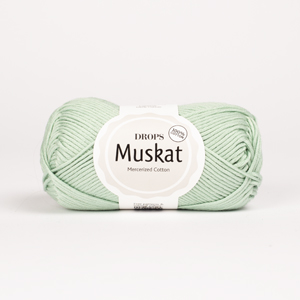

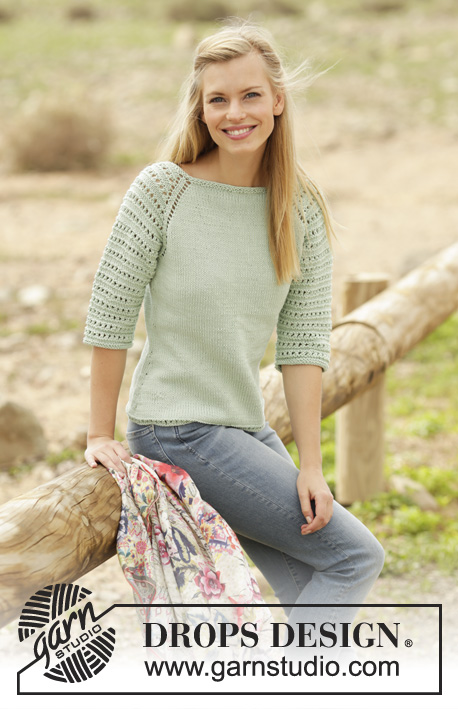
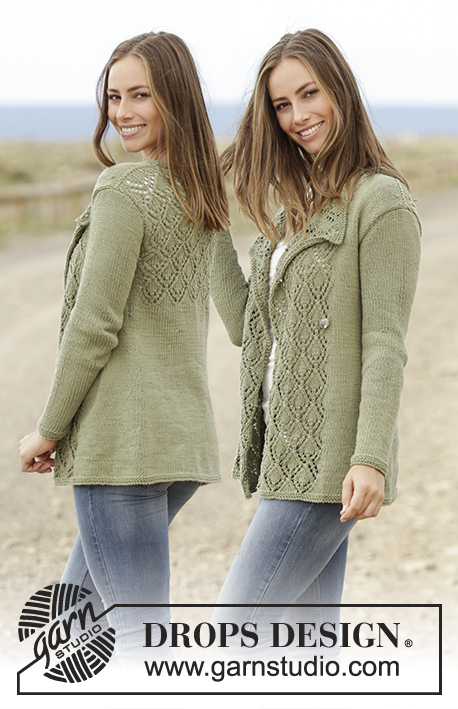


























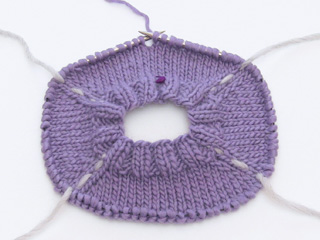












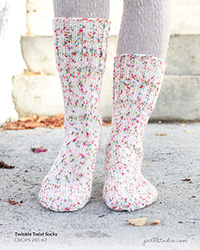
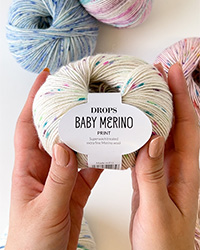

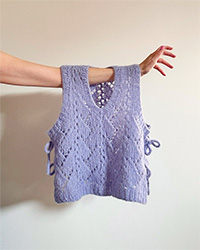


Escribe un comentario sobre DROPS 175-32
¡Nos encantaría saber qué piensas acerca de este patrón!
Si quieres escribir una pregunta referente al patrón, por favor asegúrate de elegir la categoría correcta en el formulario debajo, para acelerar el proceso de respuesta. Los campos obligatorios están marcados con un *.